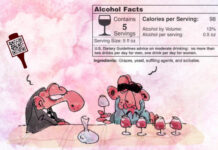Too much salt in the diet. Italians, especially in the South, seem deaf to the calls of the World Health Organization. Which never ceases to remind us of the importance of keeping salt consumption within 5 grams per day.
A tam tam relaunched these days, on the occasion of the 11th World Salt Reduction Week. From March 20 to 26, 2017, at the initiative of WASH (World Action on Salt & Health), global association with partners in 95 countries on different continents, attempts will once again be made to convince the food industry to reduce salt in products. Governments are also called upon to participate. Initiating communication campaigns to the population.
Too much salt makes you sick
As is well known, excessive salt consumption results in hypertension, the increase in blood pressure. And with this increases the risk of cardiovascular diseases, such as heart attack and stroke.
Less well known, however, is the correlation between excessive salt consumption and other chronic degenerative diseases. Tumors of the digestive system, particularly the stomach, osteoporosis, chronic kidney disease.
The excesses in Italy
According to the Ministry of Health (data from the MinSal CCM Project 2009-2012), the Italian population largely exceeds the salt consumption threshold indicated by the WHO. Against a limit of 5 grams per day (equal to 2 grams of sodium), average intakes are 10.6 g in men and 8.2 g in women. Only 5 percent of men and 15 percent of women consume less than 5 g per day of salt.
Further demonstrating that public information campaigns have not produced appreciable results, excesses are recorded even among hypertensives. Those who have already manifested this condition continue to ingest too much salt. The numbers are similar to those of the healthy population. 10.1 g among men and 8.1 g among women. With higher peaks among the obese. Among hypertensives, only 9% of men and 19% of women consume less than 5 g per day of salt.
Youth alert
Serious finally is the trend, and the feared effects on the younger generation. Among young people (ages 6-18 years), average intakes are 7.4 g of salt per day among boys and 6.7 g among girls. 93% of boys and 89% of girls have consumption above the recommended value for age.
As is evident, the scenario is far from the targets recommended by WHO in the Global Plan of Action 2013-2020. The goal is to achieve a 30 percent reduction in global salt consumption by 2025.

The responsibility of industry
At home, shifting gears is easy. The habit of bringing the salt shaker to the table must be eliminated. Give up adding salt in any home preparation. Useful little touches that are not enough, however. In fact, the largest amount of salt we consume comes from foods prepared by the food industry.
Despite agreements between the Ministry of Health and the food industry, processed foods are still too salty. The agreement for virtuous synergy signed at Expo 2015 (to also reduce sugars and saturated fats, especially in foods for young people aged 3 to 12) is still far from the desired results. Although the ministry considers the outcome of the first monitoring to be “very encouraging.” Companies have committed to reshape portions and offer additional information on the label, in areas cereal-sweet foods (breakfast cereals, cookies, savory snacks, crackers, snacks), soft drinks, dairy and ice cream
.
Industrial products to avoid
Thus, the first recommendation is to select purchases by comparing their nutritional table. Choosing those with the least amount of salt. And discarding the “irremediable” ones. This is the case with some industrial potato chips.
Identical discussion applies to bouillon cubes, as this comparison shows.
And so for ready meals, including “healthy,” organic and vegetarian and vegan meals, as revealed by this sampling.
Listing all products containing too much salt is impossible. But recognizing them is easy. Just check the nutritional table: if the salt exceeds 1.1 grams (per 100 g), the food is to be consumed in extreme moderation.

What can you do to reduce salt consumption?
- Read the nutrition label carefully to choose products in each category with lower salt content and look for products with low salt content, i.e., less than 0.3 grams per 100 g (corresponding to 0.12 g of sodium)
- Reduce the use of added salt both at the table and in cooking, preferring iodized salt, and alternatively use spices, herbs, lemon juice or vinegar to flavor and enhance the taste of foods
- Limit the use of other sodium-containing condiments (bouillon cubes, sauces, mayonnaise, etc.).
- Reduce consumption of processed foods high in salt (salty snacks, bagged chips, some cold cuts and cheeses, canned foods)
- Avoid adding salt in baby food, at least for the first year of life.
Professional journalist since January 1995, he has worked for newspapers (Il Messaggero, Paese Sera, La Stampa) and periodicals (NumeroUno, Il Salvagente). She is the author of journalistic surveys on food, she has published the book "Reading labels to know what we eat".








